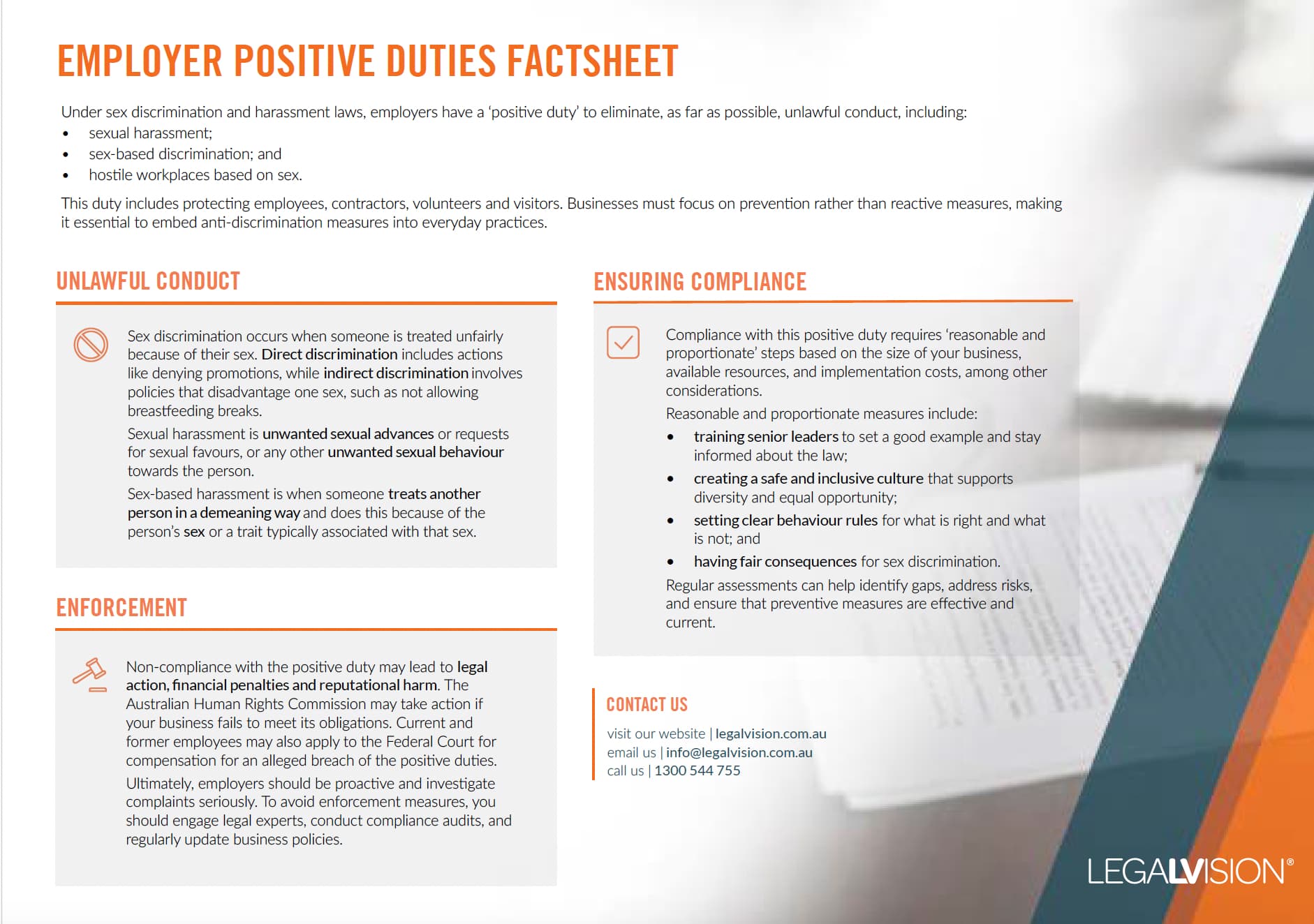In Short
- Voluntary redundancy allows employees to choose redundancy, often with financial incentives, before an employer initiates a selection process.
- This approach can help retain engaged employees while allowing those ready to leave to exit on good terms.
- Employers should ensure redundancies are genuine and may require employees to sign a deed of release to avoid legal risks.
Tips for Businesses
Clearly communicate the process and incentives to all employees. Ensure compliance with legal obligations, including consultation requirements and offering redeployment where possible. Obtaining legal advice can help navigate complexities and reduce potential risks.
Your business may want to reduce its workforce due to specific operational requirements or to manage increasing costs. One viable approach involves contemplating the redundancy of particular positions or teams. However, implementing such measures necessitates the challenging task of selecting employees for potential termination. One avenue for simplifying this process involves offering a voluntary redundancy program, whereby employees can opt for voluntary redundancy within a specified period. However, it is essential to note that this approach may entail heightened legal risks, including potential unfair dismissal claims. This article explains:
- what redundancy is;
- how to conduct the selection process;
- what voluntary redundancy is; and
- the associated risks.
What is a Redundancy?
You can make an employee redundant by terminating their employment. However, this is different from dismissing them for some fault on their behalf, such as poor performance. Instead, it is motivated by conditions that the employee cannot control, such as:
- a poor economic climate;
- new technological developments;
- changing initiatives of your business; and
- improving business efficiency.
For example, when you bring in new machinery to your factory that only requires half the manpower, you may find that certain positions are no longer necessary. This could result in making 50% of your current workforce redundant.
Under Australian law, the redundancy must meet certain conditions to be considered genuine, including that:
- an employee’s role becomes obsolete due to your operational requirements;
- you have complied with consultation obligations contained in any modern award or enterprise agreement that covers the employee; and
- you have considered and offered all reasonable redeployment opportunities for the affected employee within your business or other related entities that the employee is suited for.
Redeployment entails providing employees who are at risk of redundancy with an opportunity to transition into a comparable role within a different operational domain of the company.
The Risks of Not Satisfying These Conditions
If you fail to satisfy these conditions when you make a worker redundant, you might be vulnerable to an unfair dismissal claim or a general protections claim.
These are legal actions that an employee can take against you if they believe you have mistreated them. An unfair dismissal claim can arise if you:
- do not have a valid reason to terminate the employee; and
- have not provided them with procedural fairness in relation to their dismissal.
When an employee feels that adverse action has been taken against them for exercising a workplace right or based on a protected attribute (such as race, gender or age), they may initiate a general protections claim. As such, you should maintain a thorough written record of the redundancy process and your objective decision-making process. This documented evidence will serve as a crucial form of protection in the event of legal action being taken by the employee.

This fact sheet outlines employers’ ‘positive duty’ under sex discrimination laws, highlighting proactive measures to prevent unlawful conduct.
How to Select Employees?
Certain issues might arise if you plan to make some but not all team members redundant, especially where they are all of the same level with similar qualifications. In these circumstances, your criteria for selecting redundant employees must be:
- objective;
- measurable; and
- lawful.
Objective Criteria
Your objective criteria can include any unbiased measure of their value to your business, such as:
- skills;
- experience;
- training; and
- job performance.
You must also apply these criteria objectively and fairly to your employees. The benefit of applying selection criteria is that you are clear about what factors are accounted for and how your business made the decision. It also means that if your employees challenge their dismissal, any such claim will be much easier to defend.
Lawful Criteria
Additionally, you cannot select an employee for redundancy (or otherwise dismiss them) for reasons that are against the law. Unlawful reasoning includes any violations of state, territory and federal laws, such as:
- discrimination;
- for raising a complaint about their workplace rights; and
- being a member of a union.
What is Voluntary Redundancy?
If you struggle to select specific employees to make redundant, you can elect to carry out a voluntary redundancy period. This allows employees to choose redundancy before conducting a potential selection process, often encouraged by a financial incentive.
Under the relevant award, you can integrate voluntary redundancy into the consultation process.
For example, an employee may choose to take up the offer of becoming voluntarily redundant if they are:
- close to retirement; or
- would like to take time off work for personal reasons.
What Are the Risks?
Redundancy involves terminating your employees. Therefore, you may be at risk of an unfair dismissal claim if an employee argues that it was not a genuine redundancy (or that they were forced/pressured into ‘volunteering’ to be made redundant. However, you can avoid this potential exposure in the process of voluntary redundancy by ensuring the redundancy is carried out in accordance with employment laws. You may consider additional procedures by seeking employees taking voluntary redundancy to sign a deed of release.
A deed of release is a legally binding document that will end the employment contract between you and your employee. It will confirm the amount of money owed to the employee, including:
- long service leave payments;
- payments for untaken annual leave;
- redundancy pay entitlements; and
- additional goodwill payments (i.e. an incentive) for voluntary redundancy.
Key Takeaways
You may choose to conduct a voluntary redundancy to avoid the challenge of selecting specific employees to terminate. By providing an incentive to employees to be made redundant and requiring them to sign a deed of release, you may reduce the risk of an unfair dismissal claim. However, you should always make sure the conditions of a genuine redundancy are satisfied, even when conducting a voluntary redundancy.
If you are considering making employees redundant, our experienced employment lawyers can assist as part of our LegalVision membership. For a low monthly fee, you will have unlimited access to lawyers to answer your questions and draft and review your documents. Call us today on 1300 544 755 or visit our membership page.
Frequently Asked Questions
A genuine redundancy must meet certain criteria, including that:
+ the employee’s role is not needed due to your operational requirements;
+ you have complied with consultation obligations under any applicable modern award or enterprise agreement; and
+ you have considered and offered all reasonable redeployment opportunities for the employee within your business or other related entities.
A voluntary redundancy is when you allow employees to accept redundancy of their role voluntarily. This is often for an additional financial incentive.
We appreciate your feedback – your submission has been successfully received.











